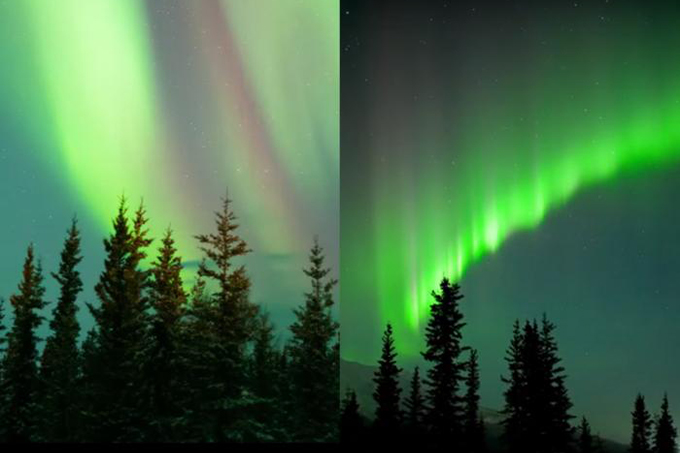Aurora Enigmas: Unraveling the complex Physics behind STEVE and similar celestial glows

In the tranquil darkness of his rural backyard in Alberta, Canada, Alan Dyer has skillfully captured the elusive beauty of a celestial phenomenon known as STEVE. Renowned for his astrophotography, Dyer, alongside fellow citizen scientists, has previously employed long exposure techniques to reveal the enchanting mauve ribbon of STEVE against the night sky.
However, during a memorable August night in 2022, as STEVE gracefully adorned the expanse above his home, Dyer opted for a distinctive approach. Instead of relying on prolonged exposures, he focused his camera’s lens on the intricate details of the sky glow, producing a captivating video at 24 snapshots per second.
The result was a mesmerizing revelation—STEVE, once a smooth drift of purple in conventional images, emerged in Dyer’s footage as a dynamically flickering torrent of purplish-white fuzz, showcasing the celestial spectacle in a newfound, enthralling light.
While Alan Dyer may not have initially perceived the aesthetic beauty in his captured video, recognizing the potential scientific significance, he decided to share his footage with Toshi Nishimura, a distinguished space physicist from Boston University.
Despite Dyer’s modest assessment of its visual appeal, the video held the promise of contributing valuable insights to the scientific community.
This proactive engagement between an astrophotographer and a space physicist exemplifies the collaborative spirit driving advancements in our understanding of celestial phenomena.
Upon receiving Alan Dyer’s video, Toshi Nishimura, a space physicist at Boston University, was struck by the unprecedented nature of the footage. Exclaiming, “Oh my God, no one has ever seen this before,” Nishimura eagerly delved into the analysis of STEVE’s high-resolution portrayal. To his surprise, the fine details captured in the video contradicted scientists’ preliminary understanding of the atmospheric chemistry underlying the enigmatic airglow phenomenon. Nishimura candidly acknowledges that STEVE’s intricate structure posed a significant challenge, stating, “This fine-scale structure gave us a huge headache, actually.” Such perplexities are emblematic of the inherent complexities within the realm of STEVE, officially known as Strong Thermal Emission Velocity Enhancement. Since citizen scientists first presented their STEVE images to researchers a few years ago, the phenomenon has continued to elude definitive explanations, perpetuating a cycle of inquiry that begets more questions than answers.
Looking ahead, NASA’s Geospace Dynamics Constellation mission is poised to deploy a fleet of spacecraft around 2027, dedicated to probing Earth’s magnetosphere and ionosphere. This ambitious endeavor holds the promise of unearthing data that could shed light on various facets of the enigmatic STEVE phenomenon, as highlighted by Gallardo-Lacourt.
Simultaneously, the steadfast community of citizen scientists, acting as STEVE’s dedicated paparazzi, will persist in capturing ground-based images of the celestial spectacle. Alan Dyer, among these enthusiasts, emphasizes the substantial scientific interest in STEVE, affirming the meaningful contributions of amateur observers. Reflecting on the transformative era ushered in by STEVE, Dyer remarks, “There’s a lot we can contribute,” dispelling any notion that amateur efforts are obsolete in aurora research dominated by rockets and satellites. While these contributions may often present new puzzles for scientists, they underscore the ongoing synergy between dedicated enthusiasts and the scientific community in unraveling the mysteries of STEVE.


